Sustainability is no longer a buzzword; it’s a crucial aspect of businesses today.
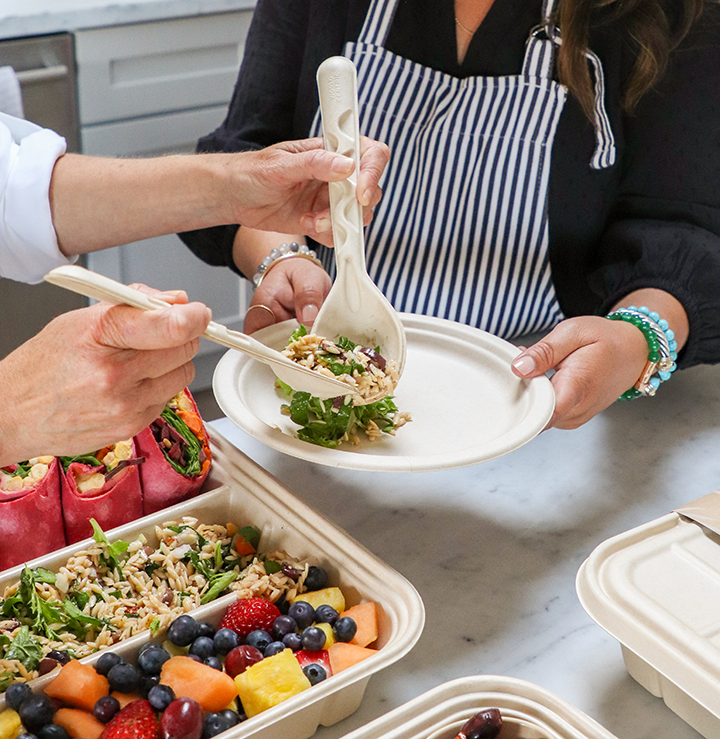
World Centric has both single and double compartment catering platters, matching flat and raised lids, as well as serving utensils. Photo courtesy World Centric
As environmental consciousness grows, sustainability has become a focal point for the catering industry. Consumers are increasingly demanding eco-friendly options, pushing caterers to adopt sustainable sourcing practices, reduce food waste, and embrace eco-conscious packaging while ensuring a smaller carbon footprint.
“Sustainability has never been more important to a wide range of consumers, especially given the last few years of significant and more extreme weather events,” the SupHerb Farms’ trend report states. “Though consumers have been challenged to spend the same amount of money on sustainable products in the face of inflation in 2023, there’s no question that sustainability is now elevated in many consumers’ minds and that they will begin to seriously seek out sustainable options once inflation begins to subside. Sustainability will impact food ingredients, packaging, delivery, and manufacturer and operator in-house behavior.”
Ingredient sourcing
Sourcing ingredients from far and wide can carry a significant price tag as you shoulder the costs of climate-controlled storage and transportation.
“Needless to say, shipping food around the world is not an eco-friendly solution,” said Elkins in an article for Catersource.
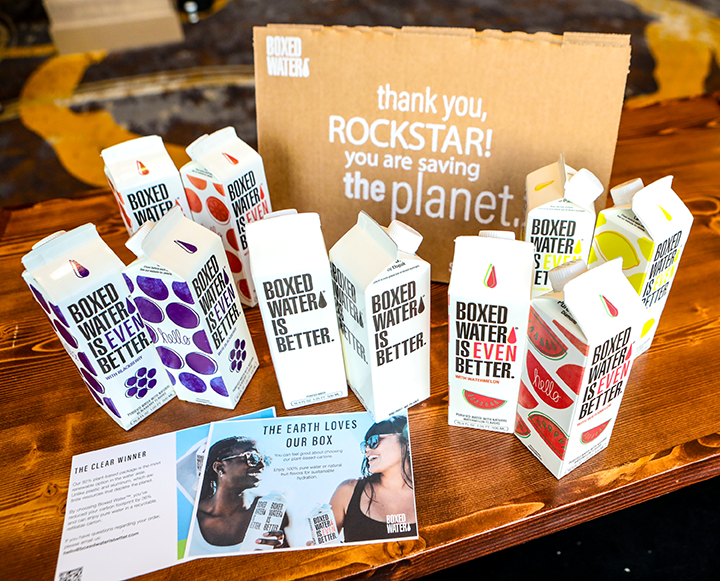
Boxed Water is a sustainable alternative to plastic bottles and aluminum cans that is 92% plant-based and 100% recyclable. Photo courtesy Buzz Orr Multimedia
So instead, skip the shipping and handling surcharges and take advantage of your local food scene, including butchers, farmers, beekeepers, brewers, and other specialists.
Some caterers are even getting extra local by producing their own ingredients.
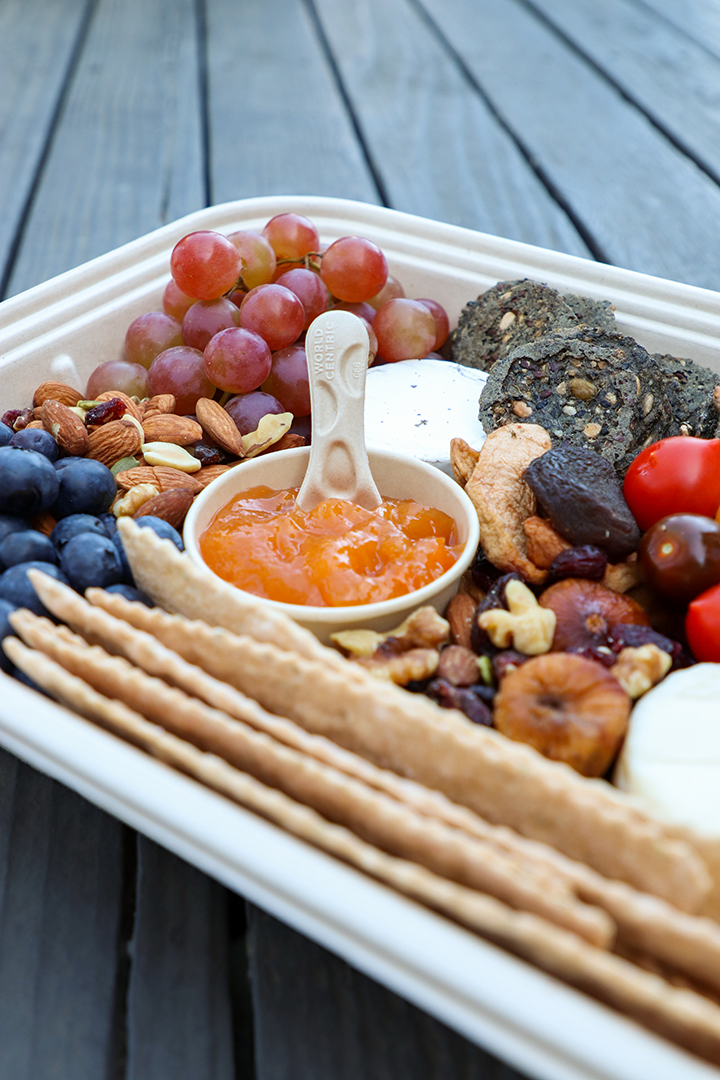
World Centric aims to provide their customers with products that can improve sustainability goals and help increase the diversion of organic materials away from landfills. Photo courtesy World Centric
By working only with vendors who follow sustainability practices and source responsibly, you can reduce the damaging effects of your event and actually harness long term community.
Reducing food waste
With nearly one-third of all food produced being wasted, the food and beverage industry is looking for every opportunity to upcycle would-be-waste. By repurposing by-products or discarded ingredients, companies can reduce waste while producing delicious and sustainable products.

The CanSPEP 2021 conference worked with a reusable container company to replace disposable food packaging. Photo courtesy Explore Waterloo Region
Earlier this year, Special Events magazine took a deep dive into the steps the events industry can take in an effort to reduce carbon emissions, a key step being reducing food waste.
According to a report by Hubspot, some of the best ways to reduce carbon emissions from food waste include:
- Minimize excess food from the start through accurate measurement and clear communication (between catering team, attendees, client, etc.)
- Donate leftover food to local organizations for redistribution
- Provide organics waste removal for composting food waste
- Practice sustainable sourcing, food waste diversion, and use biodegradable or reusable materials for dinnerware and food station setup
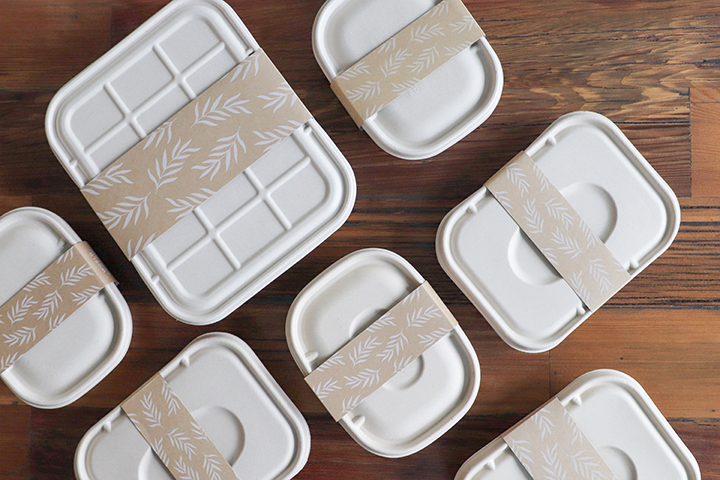
These container sleeves, which help keep food safe and trays closed during transportation, are 100% compostable. Photo courtesy World Centric
Another exciting area in the fight against food waste is technology which enables companies to reduce waste during production. One recent example is the use of AI and robotics to sort compost from trash.
“70% of what goes into the recycling container at any of your homes and any of your businesses is all straight to the landfill, because you put it in the wrong things, or those products can’t be recycled,” said Chef Paul Buchanan (Primal Alchemy) during his Catersouce + The Special Event 2023 session Talkin’ Trash: A Candid Conversation about Zero Waste.
Unconventional serving ware
There has been a significant shift from single-use plastic and paper products. Yet, while moving to reusable items like china and glassware is a step in the right direction, it’s not entirely zero-waste. After all, they require electricity, water, dish soap, and labor to properly clean, sanitize, and store.
Instead, the food and beverage industry is pivoting toward sustainable packaging solutions, aiming to reduce its carbon footprint. From plant-based plastics to zero-waste packaging, businesses are innovating to meet consumer demand for eco-conscious alternatives.
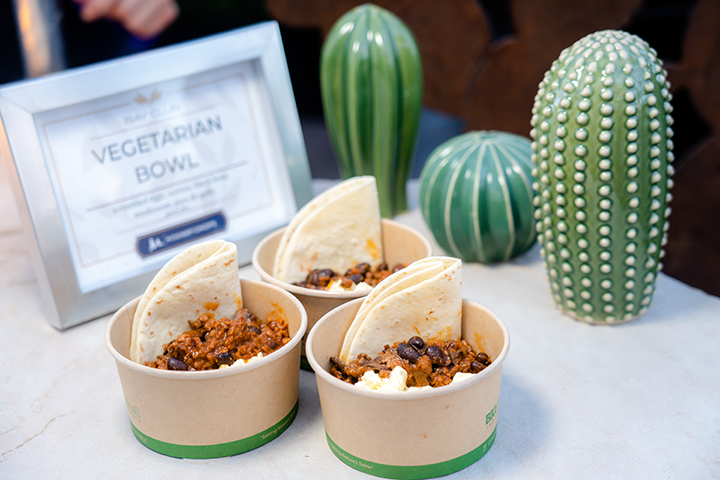
M Culinary Concepts uses compostable bowls and provides clearly labeled recycling and compost bins to better reduce waste. Photo courtesy M Culinary Concepts
Nearly one-third of U.S. consumers recently switched brands based on plant-based and compostable packaging in both foodservice and grocery channels, according to World Centric. Additionally, in the past year, over half (55%) of U.S. consumers have changed their brand purchasing behaviors in grocery or foodservice channels because of access to compostable or plant-based packaging.
Edible packaging is quickly becoming a solution to cut out waste by harnessing innovation. For instance, you might swap out a traditional glass bowl for a cored apple served with gelato in it. Or perhaps you replace metal spoons with a garlicky spoon-shaped cracker to serve with a tasty bowl of bisque. In fact, earlier this year, the University of Cambridge spun off Xampla, a startup developing edible and biodegradable plant-based packaging.
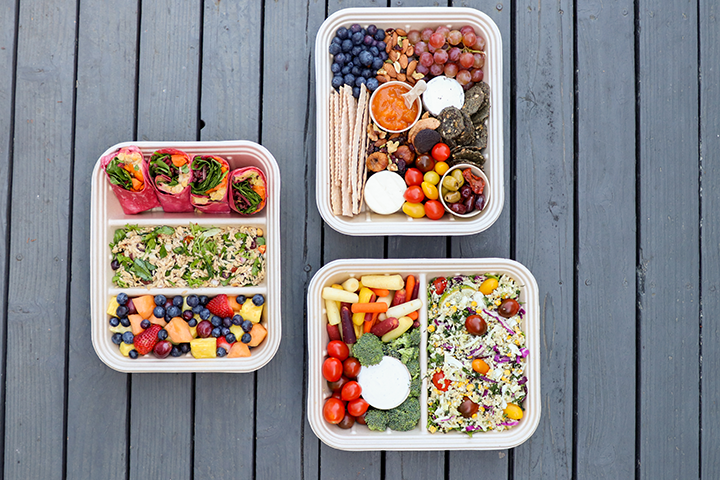
World Centric offers products that are made from plant-based or recycled materials, and their products are either compostable or recyclable. Photo courtesy World Centric
The sustainable packaging market for food and beverage is expected to exceed $100 billion in value over the next five years, according to Gourmet Pro.
More often than not, what’s good for the planet is also good for your local community. And what’s good for your community is good for your catering business.
Looking ahead to 2024
As we savor the triumphs and challenges of the catering industry in 2023, our gaze inevitably turns toward the future. What lies ahead for catering businesses in 2024?
A major shift in 2024 will be clients’ increased reliance on caterers, on more than just food.
“There will be more interest and buying of services beyond outstanding food,” says Porter. “More prospects will look for caterers and special event producers that can take on more event execution production responsibility. The better prospects and clients don’t have the time to shop all around and deal with coordinating 10 creative partners for an event. So be ready to act more as a general contractor instead of just a food provider.
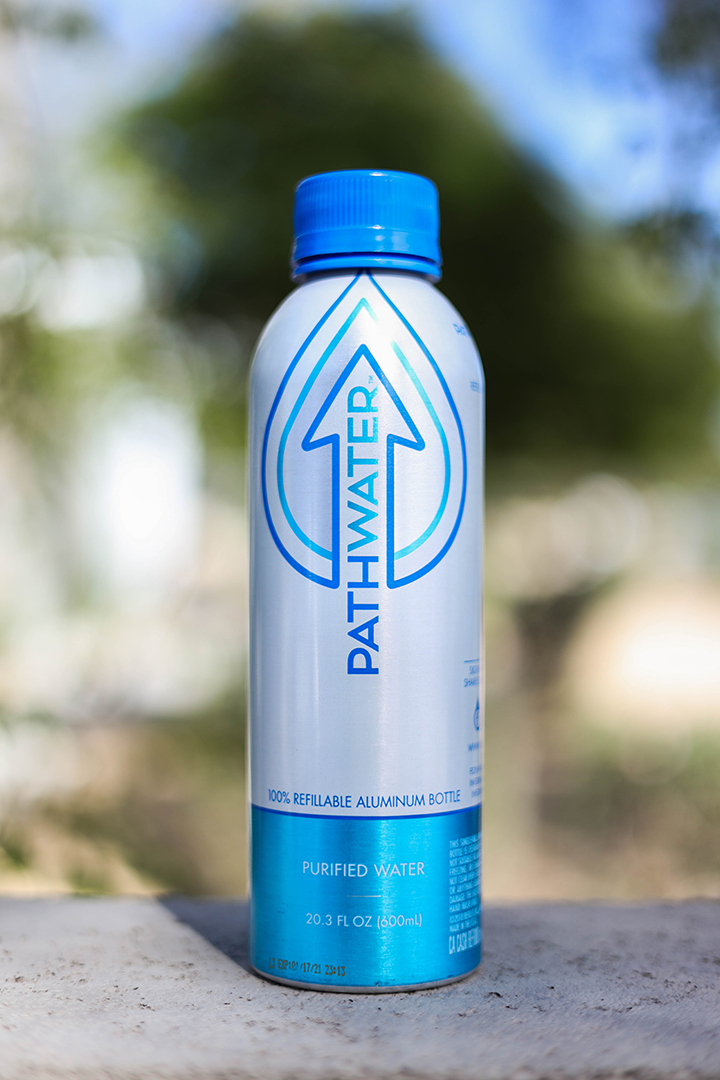
Offering guests reusable bottles keeps material in the supply chain and eliminates waste immediately. Photo courtesy M Culinary Concepts
“We’re going to have to develop a Seal Team Six attitude—service anywhere, anytime, and under any condition.”
This may be due to the fact that consumers are nervous about a possible recession.
“Consumers are just a little bit lost right now,” said Datassential Senior Director, Publications Ann Golladay in a webinar. “One month things can feel pretty good and then a month later, things kind of head a little downhill again. There’s a lot of variation and uncertainty.”
However, the foodservice industry is more positive than negative, which could lead to things like menu innovation or upgrades.
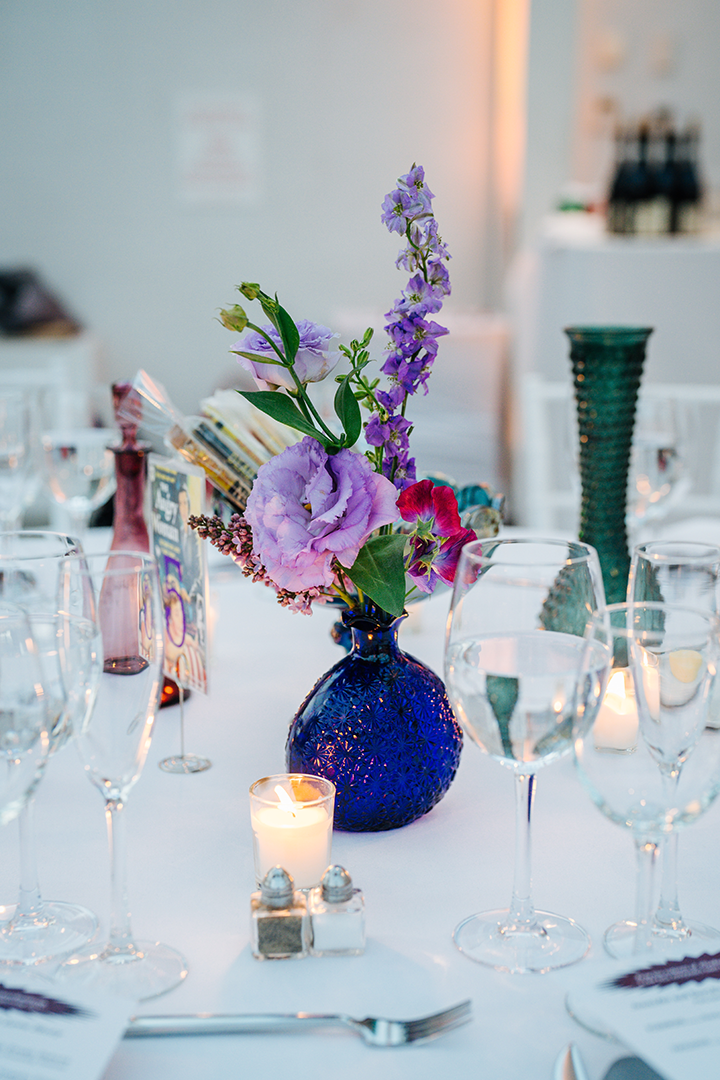
For a wedding by Kathryn Cooper Weddings, the couple used their personal collection of glassware and antique books as the centerpieces for their wedding. Photo courtesy Kathryn Cooper Weddings
Additionally, we can expect the business boom of the last two years to start leveling out in 2024, and we may even see a drop in wedding business because not very many new relationships started during the pandemic.
“In my career to date, I don’t think I have ever been as excited as I am for 2024,” says Sebastien Centner (Eatertainment Events & Catering). “I believe 2024 will bring stability back to our industry after three years of the roller-coaster ride created by the pandemic and post-pandemic periods. Companies and clients will of course still need to navigate ongoing economic and social challenges, but behind us will be the unknown of whether the world may come to another full or partial stop. We will be able to plan for the medium and long-term future, start thinking about events, programs, and conferences two and three years out (like we used to) and best of all, be able to invest in growing our businesses with a more positive sense of confidence of where things are going.”

